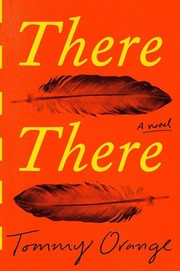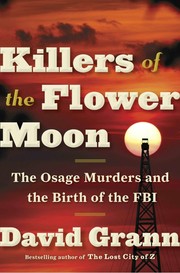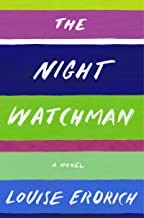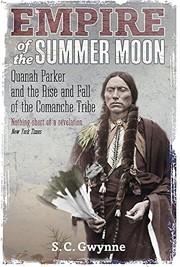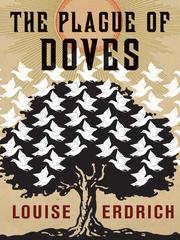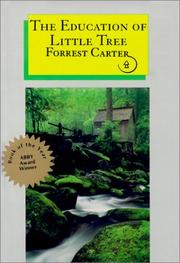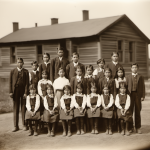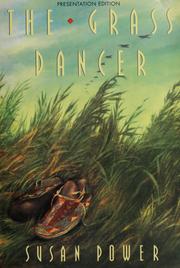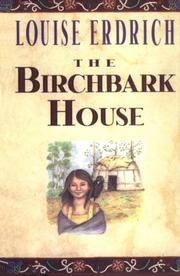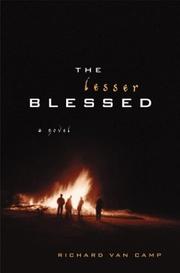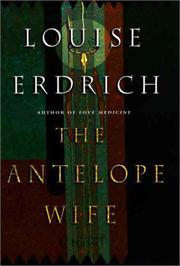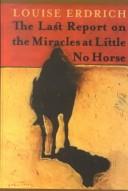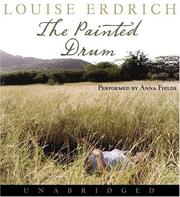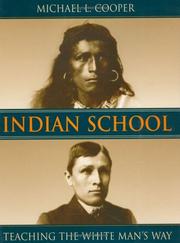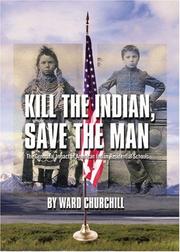Are you interested in learning more about the history and impact of Indian boarding schools? Look no further! We’ve compiled a list of the 20 best books on Indian boarding schools that will provide you with in-depth insights into this significant chapter of American history. These Indian boarding schools books offer powerful narratives, personal accounts, and historical analysis that shed light on the experiences of Indigenous children within the boarding school system. Whether you’re a history enthusiast or seeking to expand your knowledge on this topic, these books are a must-read.
Contents
- 1 20 Best Books About Indian Boarding Schools
- 2 The Round House
- 3 There There
- 4 The Absolutely True Diary of a Part-Time Indian
- 5 Killers of the Flower Moon
- 6 The Heartbeat of Wounded Knee
- 7 The Night Watchman
- 8 Empire of the Summer Moon
- 9 The Plague of Doves
- 10 The Only Good Indians
- 11 The Education of Little Tree
- 12 The Grass Dancer
- 13 The Birchbark House
- 14 The Lesser Blessed
- 15 The Antelope Wife
- 16 The Last Report on the Miracles at Little No Horse
- 17 The Painted Drum
- 18 Bury My Heart at Wounded Knee: An Indian History of the American West
- 19 Indian School: Teaching the White Man’s Way
- 20 Boarding School Syndrome: The Psychological Trauma of the ‘Privileged’ Child
- 21 Kill the Indian, Save the Man: The Genocidal Impact of American Indian Residential Schools
- 22 Conclusion
- 23
20 Best Books About Indian Boarding Schools
The Round House
by Louise Erdrich
The Round House by Louise Erdrich is a powerful and compelling book about the impact of a violent crime on a Native American family. Set on a North Dakota reservation in the late 1980s, the story follows 13-year-old Joe as he seeks justice for his mother, who has been brutally attacked. As Joe delves into the investigation, the novel explores the complexities of reservation life, the legal system, and the enduring trauma of Native American communities. The book deftly weaves together themes of family, identity, and the legacy of historical trauma, offering a poignant and thought-provoking exploration of the effects of violence and the struggle for justice. The Round House is a must-read for anyone interested in stories about Native American communities and the impact of violence on families. It’s a book about Indian boarding schools that sheds light on the lasting effects of historical trauma.
There There
by Tommy Orange
There There by Tommy Orange is a powerful and poignant novel that delves into the lives of urban Native Americans. The book is a compelling exploration of the struggles and experiences of a diverse group of characters, all of whom are connected in some way to Oakland, California. With raw and lyrical prose, Orange paints a vivid portrait of the modern Native American experience, tackling themes of identity, belonging, and the legacy of historical trauma. The novel also sheds light on the impact of Indian boarding schools, shedding light on the generational trauma and cultural dislocation that has resulted from these institutions. Through its rich storytelling and complex characters, There There offers a profound and timely reflection on the Native American experience in contemporary society.
The Absolutely True Diary of a Part-Time Indian
by Sherman Alexie
The Absolutely True Diary of a Part-Time Indian is a powerful and humorous coming-of-age novel by Sherman Alexie. It follows the story of Junior, a teenage boy who leaves the reservation to attend a predominantly white school. The book delves into the challenges Junior faces as he navigates between two different worlds, dealing with poverty, bullying, and cultural identity. Through Junior’s humorous and honest voice, the novel sheds light on the struggles faced by Native American youth, offering an insightful and poignant exploration of the complexities of identity, belonging, and resilience. This compelling book on Indian boarding schools provides a unique perspective on the experiences of Indigenous people in the modern world, making it a must-read for anyone seeking a deeper understanding of this often overlooked community.
Killers of the Flower Moon
by David Grann
Killers of the Flower Moon by David Grann is a gripping non-fiction book that delves into the shocking and tragic events surrounding the Osage Indian murders in the 1920s. The book explores the sinister conspiracy to acquire the oil wealth of the Osage Nation, leading to a series of murders that shook the community to its core. Grann’s meticulous research and vivid storytelling bring to light the widespread corruption and injustice faced by the Osage people, shedding light on a dark chapter in American history. This powerful narrative not only uncovers the truth behind the murders but also sheds light on the broader issue of exploitation and discrimination faced by Native American communities. A must-read for anyone interested in American history, true crime, or the lasting impact of the Indian boarding school system.
The Heartbeat of Wounded Knee
by David Treuer
The Heartbeat of Wounded Knee by David Treuer is a captivating and insightful exploration of Native American history. Treuer weaves together personal narratives, historical accounts, and cultural analysis to provide a comprehensive and nuanced understanding of the Native American experience. The book challenges conventional narratives of Native American history, offering a fresh perspective on the resilience and vibrancy of indigenous cultures. Treuer delves into the impact of colonization, the legacy of the Indian boarding school system, and the ongoing struggle for indigenous rights and sovereignty. Through vivid storytelling and meticulous research, The Heartbeat of Wounded Knee sheds light on the complex and multifaceted history of Native Americans, making it a must-read for anyone interested in learning about the enduring spirit of indigenous peoples.
The Night Watchman
by Louise Erdrich
The Night Watchman by Louise Erdrich is a captivating and poignant novel that sheds light on the impact of the U.S. government’s attempt to terminate tribal rights in the 1950s. Set in a fictional North Dakota reservation, the story revolves around Thomas Wazhushk, a night watchman and Chippewa Council member, who fights against the termination bill that threatens to dismantle his tribe. The novel masterfully weaves together the personal and political struggles of its characters, offering a powerful portrayal of resilience and resistance in the face of oppression. Through vivid storytelling and rich character development, Erdrich illuminates the devastating consequences of government policies on Native American communities, making The Night Watchman a must-read for anyone interested in the history and impact of Indian boarding schools.
Empire of the Summer Moon
by S.C. Gwynne
Empire of the Summer Moon by S.C. Gwynne is a captivating and deeply researched historical account of the rise and fall of the Comanche tribe and their fierce resistance against the encroaching Anglo settlers in the 19th century. Gwynne skillfully weaves together the stories of legendary Comanche leaders such as Quanah Parker with the larger narrative of the westward expansion of the United States. The book provides a vivid and brutal portrayal of the Comanche way of life, their battles with the Texas Rangers, and the eventual demise of their empire. It’s a gripping and enlightening read that offers a fresh perspective on the tumultuous and violent clash of cultures in the American West.
The Plague of Doves
by Louise Erdrich
The Plague of Doves by Louise Erdrich is a captivating novel that delves into the complex history of a small North Dakota town and the impact of a brutal crime on its inhabitants. The story unfolds through a series of interconnected narratives, spanning generations and exploring the reverberations of a haunting event. With richly drawn characters and lyrical prose, Erdrich masterfully weaves together themes of identity, trauma, and the enduring legacy of injustice. The novel also sheds light on the devastating effects of the government’s policies on Native American communities, making it a poignant and powerful book on Indian boarding schools. Through its evocative storytelling and profound insights, The Plague of Doves is a compelling and thought-provoking exploration of history, heritage, and the resilience of the human spirit.
The Only Good Indians
by Stephen Graham Jones
The Only Good Indians by Stephen Graham Jones is a gripping and haunting novel that delves into the lives of four Native American men who are haunted by a traumatic event from their past. Set against the backdrop of the modern-day American West, this book explores themes of guilt, identity, and the lingering effects of violence and cultural oppression. With its blend of horror, suspense, and social commentary, this novel offers a unique and powerful perspective on the experiences of Native Americans in contemporary society. Through its compelling storytelling and vivid characters, The Only Good Indians sheds light on the lasting impact of historical trauma and the complexities of modern Native American identity. It is a must-read for anyone interested in a thought-provoking and chilling exploration of the legacy of Indian boarding schools.
The Education of Little Tree
by Forrest Carter
The Education of Little Tree by Forrest Carter is a heartwarming and poignant book about the author’s own experiences growing up in the Appalachian Mountains with his Cherokee grandparents. This beautifully written memoir provides a rare and intimate glimpse into the traditional Cherokee way of life, filled with wisdom, humor, and love for nature. The story follows Little Tree, a young Cherokee boy, as he learns about his heritage, customs, and the natural world around him. The book offers a powerful and moving portrayal of the impact of cultural heritage and the importance of preserving traditional ways in the face of adversity, making it a must-read for anyone interested in Native American history and culture.
The Grass Dancer
by Susan Power
The Grass Dancer by Susan Power is a captivating novel that weaves together the lives of several generations of Native American families. Set in the Dakotas, the story is a rich tapestry of magical realism, family secrets, and the resilience of the human spirit. Power’s lyrical prose and vivid storytelling bring to life the experiences of the characters as they navigate the complexities of their cultural heritage and the impact of historical events, including the devastating effects of the Indian boarding schools. The novel delves into the interconnectedness of past and present, and the enduring power of tradition and storytelling. Through its evocative narrative, The Grass Dancer offers a poignant and thought-provoking exploration of the lasting legacy of the Indian boarding schools on indigenous communities.
The Birchbark House
by Louise Erdrich
The Birchbark House by Louise Erdrich is a captivating novel that provides a glimpse into the life of a young Ojibwa girl named Omakayas. Set in the 19th century, the story follows Omakayas as she navigates the challenges of growing up in a Native American community. Readers will be drawn into the vivid descriptions of Ojibwa culture and traditions, as well as the everyday struggles and triumphs of the characters. This beautifully written book offers a unique perspective on Native American history and is a must-read for anyone interested in learning about indigenous cultures. With its rich storytelling and powerful themes, The Birchbark House is a poignant and eye-opening exploration of life before the era of the ‘book on Indian boarding schools’ became prominent.
The Lesser Blessed
by Richard Van Camp
The Lesser Blessed by Richard Van Camp is a coming-of-age novel that delves into the life of Larry Sole, a troubled teenager living in a small town in Canada. The story explores Larry’s struggles with his identity, family dynamics, and the challenges of growing up as an indigenous youth. Set against the backdrop of the harsh realities of life in a remote northern community, the novel offers a raw and unflinching look at the complexities of indigenous experiences. Van Camp’s vivid storytelling and authentic portrayal of indigenous culture make this a compelling and important read. The book provides a unique perspective on the impact of ‘book on indian boarding schools’ and the resilience of indigenous communities. It is a powerful ‘book about indian boarding schools’ that will resonate with readers seeking insight into the complexities of indigenous life.
The Antelope Wife
by Louise Erdrich
The Antelope Wife by Louise Erdrich is a captivating novel that weaves together the lives of two Native American families in North Dakota. Through the generations, the families experience joy, heartache, and the enduring power of love and tradition. Erdrich’s lyrical prose and deep understanding of Native American culture bring the characters to life, as they navigate the complexities of identity and heritage. The novel also delves into the impact of colonization and assimilation on Native communities, making it a poignant and thought-provoking read. With its rich storytelling and exploration of themes such as resilience and cultural preservation, The Antelope Wife is a compelling and important book about Native American history and experience, particularly the legacy of Indian boarding schools.
The Last Report on the Miracles at Little No Horse
by Louise Erdrich
The Last Report on the Miracles at Little No Horse by Louise Erdrich is a captivating novel that delves into the complexities of identity, faith, and love. Set in the backdrop of a fictional Ojibwe reservation, the story follows the life of Father Damien Modeste, a Catholic priest who has been living among the Ojibwe people for decades. As he grapples with his own personal struggles and the secrets he holds, Father Damien becomes deeply entwined in the lives of the reservation’s inhabitants. The novel beautifully weaves together themes of spirituality, tradition, and the impact of colonialism on indigenous communities. With its rich storytelling and profound exploration of the human experience, The Last Report on the Miracles at Little No Horse is a must-read for anyone interested in a powerful narrative that sheds light on the lasting effects of the Indian boarding school system.
The Painted Drum
by Louise Erdrich
The Painted Drum by Louise Erdrich is a captivating story that revolves around a rare Ojibwe ceremonial drum and the lives it touches. The book delves into the history and culture of the Native American people, exploring the impact of colonization and the trauma of the Indian boarding school experience. Through multiple interconnected narratives, the novel offers a powerful exploration of family, heritage, and the enduring legacy of the Indian boarding school system. With lyrical prose and poignant storytelling, Erdrich weaves a tapestry of emotions and experiences, shedding light on the resilience and spirit of the Ojibwe people. The Painted Drum is a compelling and thought-provoking read that delves deep into the complexities of identity, tradition, and the lasting effects of the Indian boarding school system.
Bury My Heart at Wounded Knee: An Indian History of the American West
by Dee Brown
Bury My Heart at Wounded Knee: An Indian History of the American West by Dee Brown is a powerful and devastating account of the colonization of the American West from the perspective of Native American tribes. The book vividly portrays the suffering and betrayal experienced by the Native American people as their land and way of life were systematically destroyed by the US government and settlers. Through a series of heartbreaking narratives, Brown sheds light on the atrocities committed against the indigenous tribes, including the forced relocation, broken treaties, and the establishment of Indian boarding schools. This eye-opening and deeply moving book provides a crucial perspective on this dark chapter of American history and is a must-read for anyone seeking to understand the true impact of westward expansion on Native American communities.
Indian School: Teaching the White Man’s Way
by Michael L. Cooper
Indian School: Teaching the White Man’s Way by Michael L. Cooper is a compelling and insightful exploration of the Indian boarding school system in the United States. Through extensive research and firsthand accounts, Cooper delves into the complex and often painful history of these institutions, which were designed to assimilate Native American children into mainstream white culture. The book sheds light on the harsh realities of life in these schools, where students were forced to abandon their cultural traditions and language in favor of Euro-American customs. Cooper’s narrative is both poignant and thought-provoking, offering a comprehensive understanding of the profound impact of Indian boarding schools on indigenous communities. This book about Indian boarding schools is a must-read for anyone interested in Native American history and the enduring legacy of colonialism.
Boarding School Syndrome: The Psychological Trauma of the ‘Privileged’ Child
by Joy Schaverien
Boarding School Syndrome: The Psychological Trauma of the ‘Privileged’ Child by Joy Schaverien delves into the psychological impact of boarding school experiences on children from privileged backgrounds. Schaverien explores the long-lasting effects of separation from family, emotional repression, and the pressure to succeed that are common in boarding school environments. Drawing on her clinical experience, she presents case studies and insightful analysis to shed light on the complex trauma experienced by these ‘privileged’ children. This thought-provoking book offers a unique perspective on the psychological dynamics at play in boarding schools and provides valuable insights for parents, educators, and mental health professionals. Whether you’re interested in understanding the impact of boarding school experiences or seeking to support individuals who have gone through similar challenges, this book is a must-read.
Kill the Indian, Save the Man: The Genocidal Impact of American Indian Residential Schools
by Ward Churchill
Kill the Indian, Save the Man by Ward Churchill is a powerful and eye-opening book about the genocidal impact of American Indian residential schools. The author delves into the history of these institutions, which were designed to assimilate Native American children into mainstream American culture by stripping them of their language, culture, and traditions. Churchill sheds light on the devastating effects of these schools, which not only resulted in the loss of Indigenous identity but also led to physical and emotional abuse, trauma, and intergenerational trauma. Through extensive research and compelling storytelling, the book exposes the dark and often overlooked history of Indian boarding schools and their lasting impact on Native communities. It’s a must-read for anyone interested in understanding the complex and heartbreaking legacy of these institutions.
Conclusion
Exploring the complex and often painful history of Indian Boarding Schools, these 20 best books about Indian boarding schools offer powerful narratives that shed light on the experiences of Native American children. From personal memoirs to historical accounts, these books provide a comprehensive understanding of the impact of these institutions on indigenous communities. Through compelling storytelling and insightful analysis, these books are essential reads for anyone seeking to learn more about this important chapter in American history.
Which Indian Boarding Schools book is best?
The best book on Indian Boarding Schools can vary with personal preference, but three widely recommended titles are:
- The Round House by Louise Erdrich,
- There There by Tommy Orange,
- The Absolutely True Diary of a Part-Time Indian by Sherman Alexie.
Each offers valuable insights and could be a great starting point.
What are the best books to learn about Indian Boarding Schools?
For those looking to learn about Indian Boarding Schools, there is a wealth of literature that can provide a comprehensive understanding of the subject. Some of the most highly recommended books include:
- The Round House by Louise Erdrich,
- There There by Tommy Orange,
- The Absolutely True Diary of a Part-Time Indian by Sherman Alexie,
- Killers of the Flower Moon by David Grann,
- The Heartbeat of Wounded Knee by David Treuer,
- The Night Watchman by Louise Erdrich,
- Empire of the Summer Moon by S.C. Gwynne,
- The Plague of Doves by Louise Erdrich,
- The Only Good Indians by Stephen Graham Jones,
- The Education of Little Tree by Forrest Carter
These books offer a range of perspectives on Indian Boarding Schools, covering various aspects and approaches to the subject.
What are the best books on Indian Boarding Schools?
The best books on Indian Boarding Schools include:
- The Round House by Louise Erdrich,
- There There by Tommy Orange,
- The Grass Dancer by Susan Power,
- The Birchbark House by Louise Erdrich,
- The Plague of Doves by Louise Erdrich,
- The Night Watchman by Louise Erdrich.
Each offers unique insights into the subject. While these books on the topic of Indian Boarding Schools are highly regarded, it’s important to note that any list of ‘best’ books is subjective and reflects a range of opinions.
What are the best Indian Boarding Schools books of all time?
Choosing the best Indian Boarding Schools books of all time can vary depending on who you ask, but seven titles that are often celebrated include
- The Round House by Louise Erdrich,
- There There by Tommy Orange,
- The Heartbeat of Wounded Knee by David Treuer,
- The Plague of Doves by Louise Erdrich,
- The Education of Little Tree by Forrest Carter,
- The Birchbark House by Louise Erdrich,
- and The Grass Dancer by Susan Power.
Each of these books has made a significant impact in the field of Indian Boarding Schools and continues to be influential today.


